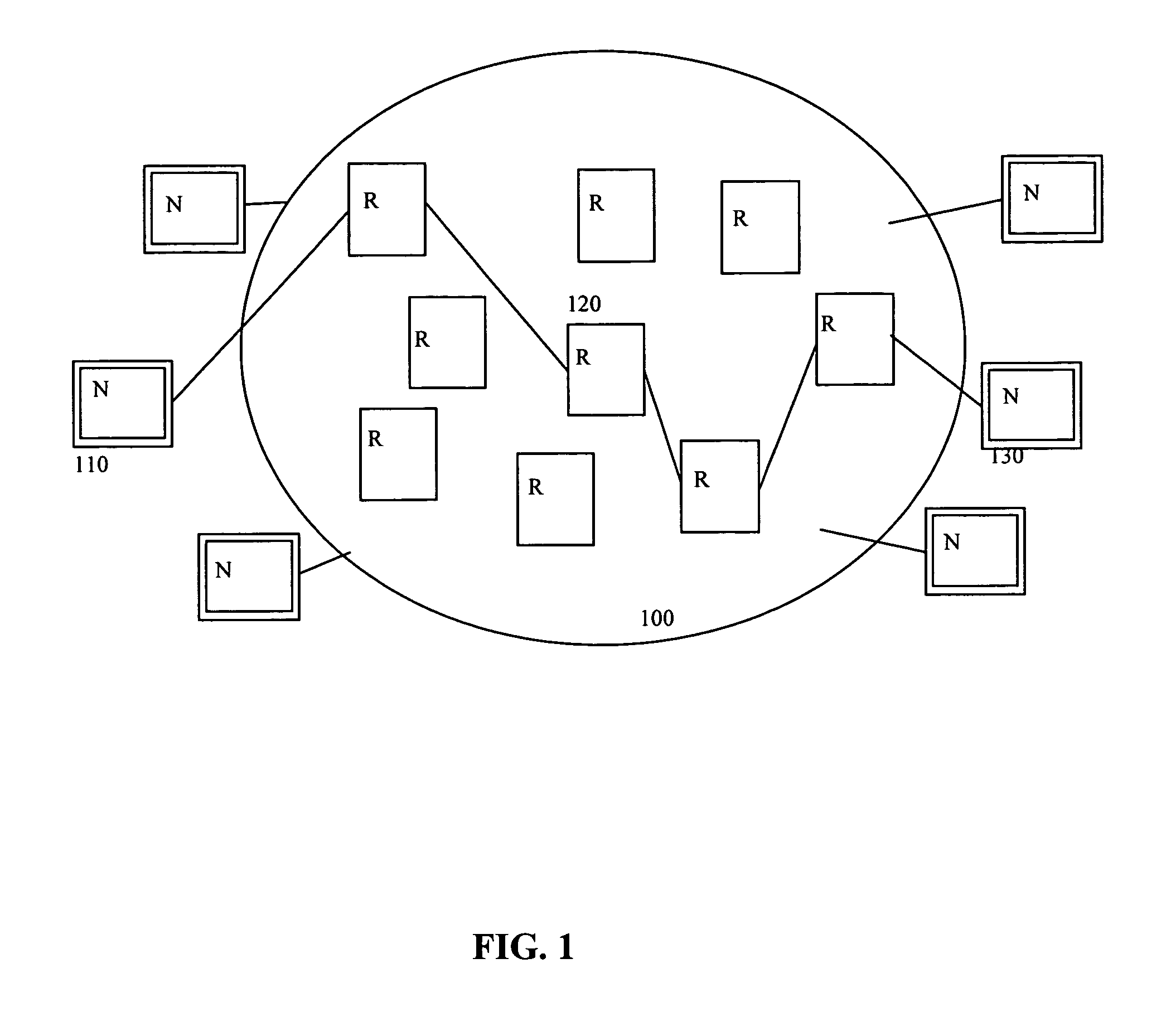Method and apparatus for process flow random early discard in service aware networking systems
a technology of process flow and early discard, applied in the field of service aware network routers, can solve the problems of inability to deal with simple congested system behavior, network congestion, and inability to handle traffic passing one or more routers, so as to improve overall system performance and efficiency.
- Summary
- Abstract
- Description
- Claims
- Application Information
AI Technical Summary
Benefits of technology
Problems solved by technology
Method used
Image
Examples
Embodiment Construction
[0001]I.A. Field of the Invention
[0002]The present invention relates generally to the congestion monitoring and processing of packets in a full duplex communication system. Specifically, the present invention is related to systems where Random Discard (RED) mechanisms provide for a better network overall throughput. More specifically the invention relates to the implementation of service aware network router (SAN-R). The present invention is embodied in a packet transfer apparatus for a network system; a network system; and methods for transferring packets in a network.
[0003]I.B. Background of the Invention
[0004]Packets of data, flowing between a network of computers, carry portions of digital information between different nodes in the network. Such a network is described schematically in FIG. 1. Most generally, the results of an application running at one node 110, may be sent to a computer at another network node 130. In order to establish the transfer of data related to the appli...
PUM
 Login to View More
Login to View More Abstract
Description
Claims
Application Information
 Login to View More
Login to View More - R&D
- Intellectual Property
- Life Sciences
- Materials
- Tech Scout
- Unparalleled Data Quality
- Higher Quality Content
- 60% Fewer Hallucinations
Browse by: Latest US Patents, China's latest patents, Technical Efficacy Thesaurus, Application Domain, Technology Topic, Popular Technical Reports.
© 2025 PatSnap. All rights reserved.Legal|Privacy policy|Modern Slavery Act Transparency Statement|Sitemap|About US| Contact US: help@patsnap.com



